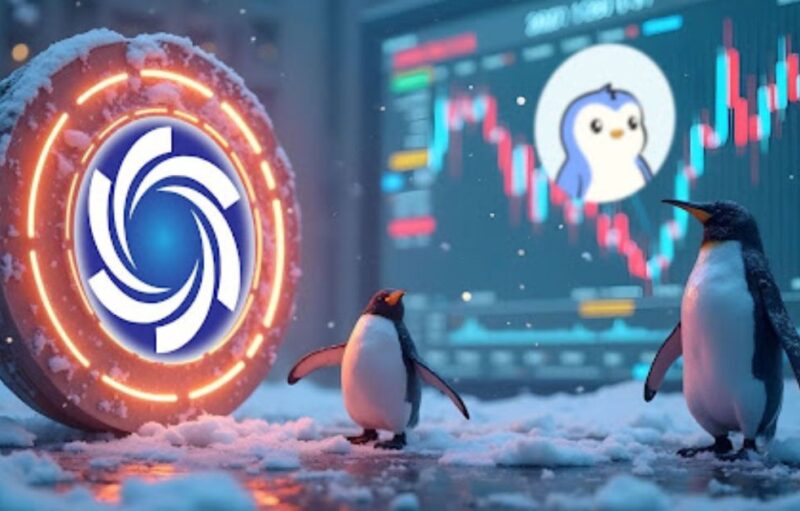
Currently, there is a lot of speculation and forecasting going on in the DeFi ecosystem. After a wholesome year of remarkable growth and performance, DeFi is finally grabbing much attention than it has ever had.
Unsurprisingly, there are still many critics and skeptics constantly probing the viability and longevity of DeFi protocols. In all fairness, with every new technology, eventual mainstream adoption is a process that takes time and patience.
By imprinting the whole financial spectrum on a peer-to-peer network, DeFi has eliminated third parties and financial intermediaries to allow users to gain control of their finance. However, while DeFi protocols involve a broad range of traditional financial services like saving, investing, borrowing, loans, and credit systems, fundamental finance principles set some protocols apart from others. Of course, in a couple of years, several DeFi protocols will retain popularity at the incompetent ones’ expense.
ECOC financial Growth token
The ECOC financial growth token (EFG) is an ECRC20 based token that is brooding high interest in the DeFi ecosystem. Today, the vast majority of DeFi users are blockchain mid to expert level enthusiasts; however, EFG bridges the knowledge gap to make open finance available to the simplest of users. Ultimately, the aim remains to gather a wide user base consisting of low to high-level DeFi enthusiasts and equally benefit every user.
The EFG dApp also allows users to swap any assets on the blockchain network; this way, users can “cross-platform,” essentially fulfilling a completely decentralized operating model. Unlike many other DeFi dApps, the EFG dApp is not Stablecoin based; it uses the Grace period token(GPT), a token that can be farmed using the EFG token. Besides earning through passive staking, users also avoid excessive gas fees and trade their tokenized assets close to real-time.
Also, the EFG token owners have an advantage of long volatility, an increase or decrease in the value of the underlying asset, ECOchain can easily be leveraged by the buyer or seller to increase profitability.
The ECOC DeFi ecosystem and behavioral finance
One mistake DeFi users may often make is avoiding critical economic principles and behavioral finance altogether. Although one might argue that real-world applications, especially in DeFi, may be tedious and painstaking, an all-round understanding would help to understand risks and make better decisions fully. Remember, the DeFi ecosystem itself deals with risks; participants must appropriately learn risk and reward.
Many would often argue that individuals don’t make a rational investment decision in making simple or complex financial decisions, while institutional investors may make a sensible investment decision. Behavioral finance exploits many reasons, including overconfidence, inertia, and loss aversion, to better understand why individuals would often make those less rational decisions.
The ECOC DeFi ecosystem, through loan pledge data, provides community investors with more objective references to market trends, timely data changes, and overall helps reduce investors’ risks. Ultimately, the ecosystem follows four fundamental pricing theories, including:
- Arbitrage pricing theory: The APT is a theory of asset holding that models an asset’s returns as a linear function of expected asset returns and other macroeconomic variables. The macroeconomic variables are essentially unforeseen and uncalculated factors that may eventually influence an asset’s returns. The ECOchain ecosystem allows users to compensate for system data risks, market portfolio risk, and develop a simpler model of dealing with risk compensation.
- Optional pricing theory: EFG’s optional pricing theory calculates the probability that EFG hedging collateral data will be exercised within the price(ITM) at maturity and as expected. By using a multifactorial model, a fair theoretical value of the EFG token can easily be determined.
- Capital asset pricing model theory: CAPM describes the parallels between systemic risk and expected returns for assets. By combining CAPM theories with OPT, the ECOC DeFi ecosystem provides users with dependent stable data and ultimately ensures better risk management.
- Modern Portfolio Theory: Based on a given level of market risk, risk-averse ECOC DeFi participants are provided with a better construct of calculating expected returns.
Undoubtedly, from creating a unique DeFi token to maximizing behavioral finance’s core principles, the ECOC financial growth token is not just any other token. Indeed, this unique DeFi model will create a path for both new and old tokens to create a more sustainable DeFi ecosystem.
Disclaimer: This is a paid post and should not be considered as news/advice.
The post appeared first on AMBCrypto






